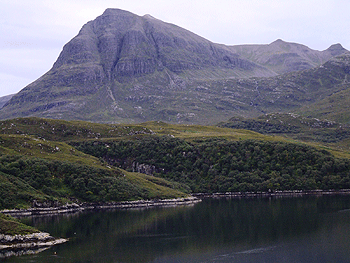The Deer-forest divide

There is currently a debate in the Scottish Highlands between conservationists and deer managers on how to regenerate native woodland. Conservationists would like to see deer numbers reduced to a level that allows young trees to survive. This requires a very low deer density of one deer per 30 to 60 acres, but this could bring them into conflict with sporting estates, which see this as too low to maintain their commercial viability. They argue that, if woodland is to be regenerated, it makes more sense to put up fences — temporarily if need be.
Initially it appears that both sides are correct, but I believe there is a fundamental flaw underlying the conservationists’ argument (though I am one myself). Calculations suggest that, assuming 10 per cent of plant growth is eaten each year, the native vegetation has a carrying capacity of one deer per three acres, 10 times higher than that proposed by conservationists. They are, in fact, arguing for an unnaturally low deer density. Even if predators, such as wolves, were present, it is improbable that they would reduce numbers so dramatically. Such a low density would also be difficult to maintain in the long-term, as the amount of un-utilised grazing will always draw animals in.
Sensitivity to grazing
One reason why trees are so sensitive to grazing here is that the soil conditions are poor, with high soil moisture and low nutrient availability hindering their regeneration. Another is that the oceanic climate provides no snow cover to protect trees from winter grazing, and it also allows relatively high numbers of over-wintering herbivores. Additionally, most of upland Scotland is ecologically unsuited to thorny scrub, which in other parts of Britain can protect trees from grazing during the first stage of succession from open ground to woodland. However, along the coastal fringe, woodland can regenerate in places even with high grazing pressure: this is because milder conditions allow more winter growth of grass, taking grazing pressure off trees.
Woodland might therefore be expected to be naturally rare in the Highland landscape. Conservationists find this hard to accept. The idea of a Great Wood of Caledon, which once cloaked Scotland from coast to mountain top, is still powerful. However, one of Scotland’s foremost historians, the Historiographer Royal, Professor Christopher Smout, has stated that it is a myth.
Certainly, there were once more trees in the landscape, as shown by tree stumps found in peat, but these generally date to between 4,000 and 5,000 years ago. Their loss has been put down to climate change and natural soil impoverishment. Indeed, research suggests that on poor soils, there is a natural post-glacial succession from open ground to woodland then back to open ground.
However, the concept of “woodland restoration” has such a strong hold that it is the policy of all conservation organisations. It is also backed by the Scottish Government’s Scottish Forestry Strategy, which envisages a quarter of Scotland being wooded. In contrast, there is no moorland strategy, which is surprising when Scotland’s open moors and bogs are seen as internationally important. In my view, this not only goes against the natural ecological grain, but will also result in the loss of what makes Scotland so distinctive: an open landscape where the great boreal forests have come to an end on the Atlantic fringe of Europe.
Though I am not a shooter, I sympathise with landowners who are being lobbied to keep deer numbers way below the carrying capacity of the vegetation. Conservation needs to be underpinned by science — and these issues need much more debate.
Dr James Fenton is an ecological consultant based in Argyll. He was the National Trust for Scotland’s first ecologist and has also worked for Scottish Natural Heritage.








